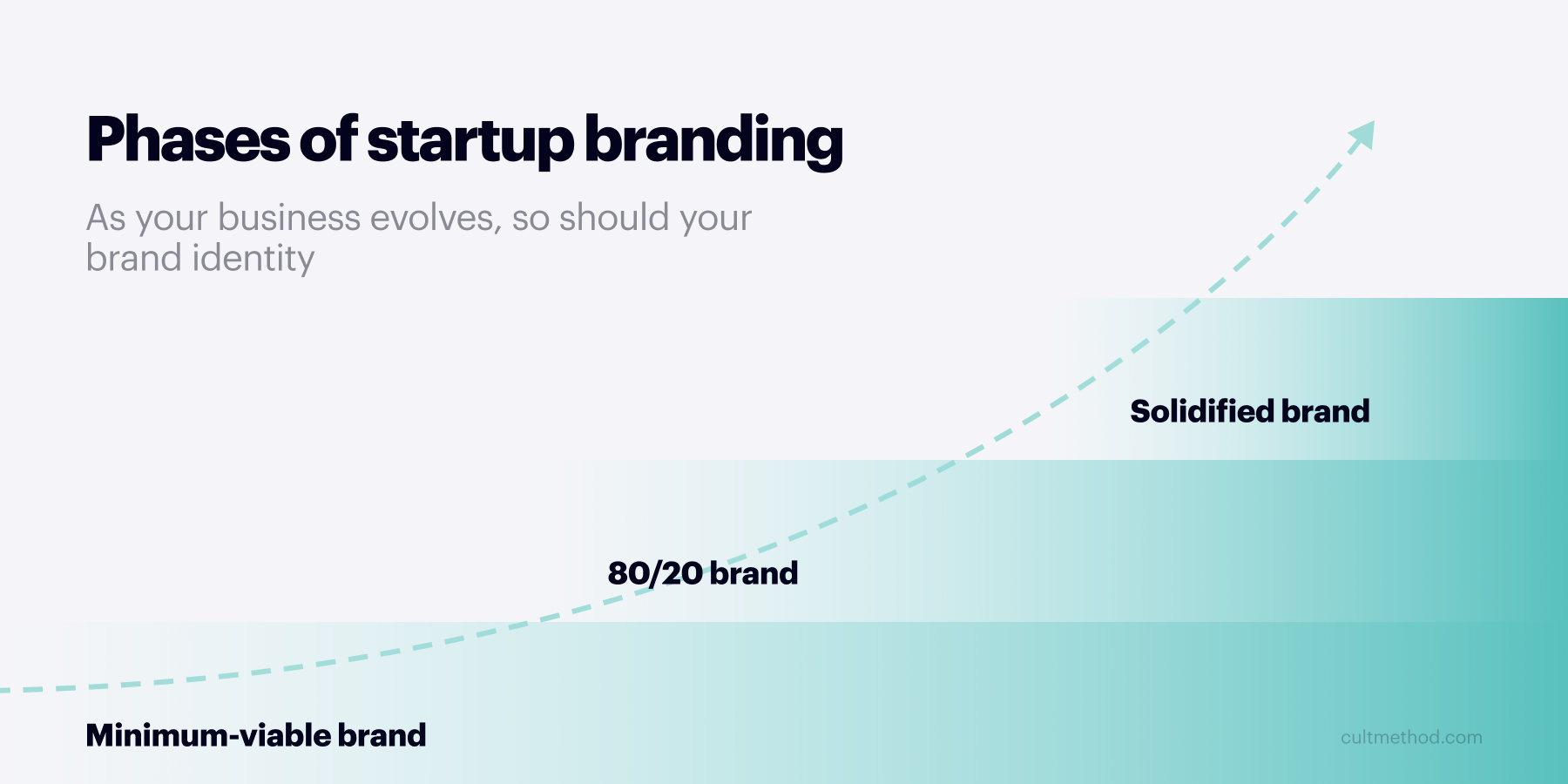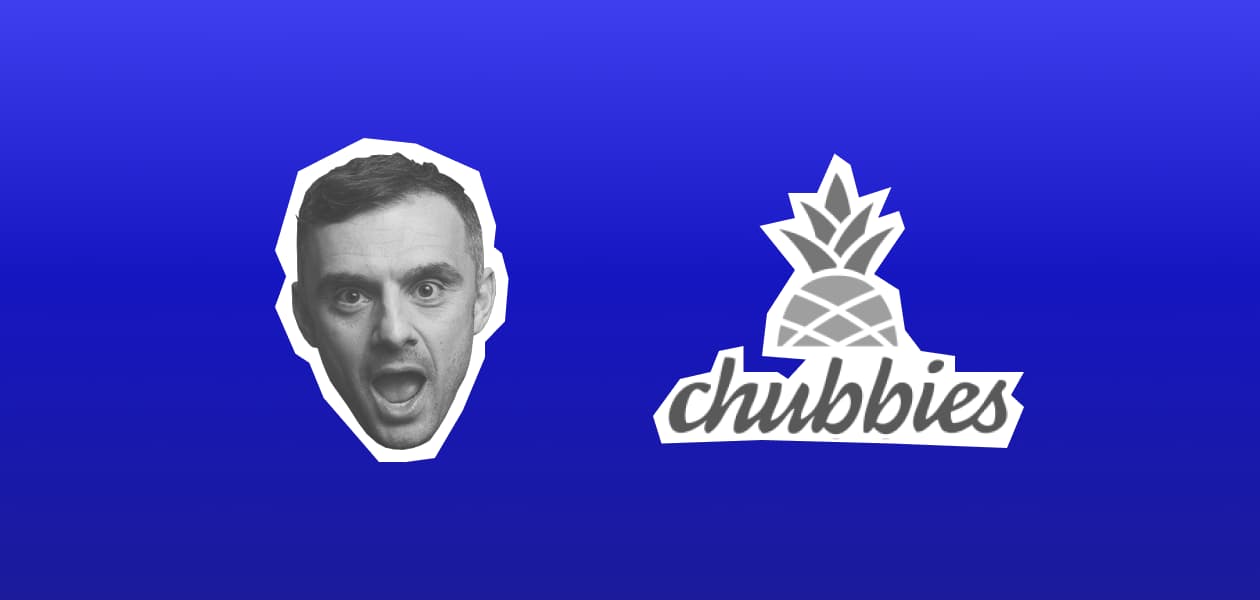Branding gurus love to point to Apple, Nike, and Amazon as examples to model your own brand after.
“Look at Apple, they have an abstract logo mark and never type their brand name out! They Start With Why, their tagline is ‘Think Different’!”
“Look at Nike, they run advertising campaigns about social issues!”
Pointing to Fortune 100 brands is convenient, because most people are familiar with them. IT also enables you to paint with a very broad brush and ignore strategic, tactical, and practical limitations.
There are some good insights to be discovered by studying these companies, to be sure. But what works for a multi-billion-dollar brand will not necessarily work for people like me and you, Dear Reader.
Here’s the deal: Depending on where you’re at in your business journey, different demands are placed on your branding. I call it the “brand maturation ladder”, and it contains three major steps that you need to keep in mind as you embark on your journey.

Phase 1: Minimum-viable brand
Before you’ve validated your product idea, there’s no use in spending much time or money on a long-lasting, professionally-designed brand identity. Instead, create a minimum-viable brand.
Your minimum-viable brand should consist of the following:
- an okay brand name,
- set in a classic typeface (Helvetica Bold, Futura Bold, all-caps Clarendon, or Cooper Black depending on the nature of your business)
- with no more than one inoffensive brand color (tip: go for tertiary colors, not primary colors).
You don’t need a logo symbol. If you have to set up social media profiles, set your avatar to a solid-color square. If you have to set up a website, use an off-the-shelf Shopify or Squarespace template.
The purpose of your minimum-viable brand is not to differentiate you, or to build a long-lasting and effective identity. The purpose is very simple: to do the bare minimum required in order to present your business idea in a way that makes it appear like a real business, without sending potential customers running.
If you have the necessary software and technical skills, you can pretty easily DIY everything you need during this phase. The whole point is to minimize your personal downside in terms of time and money.
Phase 2: 80/20 brand
You reach Phase 2 when you’ve validated your product idea and committed to building a successful business. That’s the point at which you outgrow your homemade minimum-viable brand, and when it starts to make sense to invest money or time into something a little more sustainable.
Note that I used the word “sustainable”, not “permanent”!
Many business owners do indeed decide to reach out to an identity designer when they reach Phase 2. The problem is that they usually fall into one of two traps:
-
Thinking that what they need is just something “new”, rather than something new and better—thus turning to Fiverr or 99designs to have something made on the cheap.
-
Thinking that what they need is a permanent solution that will live with them for as long as the business is around, and therefore needs to be perfect.
Now, I know you know better than to skimp out on design. You’re smarter than that, Dear Reader. But, because you are ambitious and passionate about your business, you might be inclined to think you need to nail the perfect solution on the first try.
Big mistake.
When you set out to create the perfect brand identity you will naturally end up working with a highly talented designer—such as me (I’m humble, too). But if that designer hasn’t spent enough time thinking about what you actually need—most designers don’t, as they are fundamentally artists and just care about the work rather than the client—he’s going to charge you a lot of money for things that end up being useless or, worse, obstacles to your growth.
That’s because you haven’t collected enough real-world data yet to be 100% confident in your value proposition, target audience, or other pieces of the marketing strategy.
Things are still very fluid, which means that your brand identity should be too.
Most designers don’t leave enough room for things to change. They use the information available to them in order to come up with an appropriate, and 100% complete, solution. But when the information changes, much of the work is rendered obsolete—work that you paid top money for.
Enter the 80/20 brand. This is what you actually need: an effective and compelling brand identity that can sustain you for years to come, not as a set-in-stone corporate identity system, but a living, breathing organism that can be adapted and adjusted as your marketing strategy continues to develop over time.
Incidentally, this is what I do in my Launch Pad engagements, so if you need an 80/20 brand to help you scale up and professionalize your marketing efforts, shoot me a message.
Phase 3: Solidified brand
By collecting enough real-world data through speaking with customers, trying different experiments, and learning from your competitors, you reach Phase 3—the final stage of startup branding.
Reaching Phase 3 means you are ready to solidify your brand identity, and make serious, long-term investments in building your brand and spreading awareness of it. This is when you make the tweaks needed take your identity from “pretty damn good” to “undoubtably great” (i.e. the inefficient part of the 80/20 principle) and begin to formalize different aspects of your brand execution.
Unfortunately, most designers treat every client as though they were in Phase 3—not out of malice, but out of ignorance and personal self-interest (for obvious reasons, Phase 3 projects command higher price tags and are more fun to promote as case studies).
If you want to see what a good 80/20 brand looks like, check out some of my Launch Pad case studies below:
-
Branding for an LA-based realtor: the House Hack Los Angeles case study
-
Branding for an e-commerce company (which grew to multi-six-figures in one year, without any paid advertising): the Greco Gum case study

Jon Persson
Jon Persson

Hiring a designer? Grab this.
My Pre-Hire Checklist gives you valuable tips to consider before hiring an identity designer.


